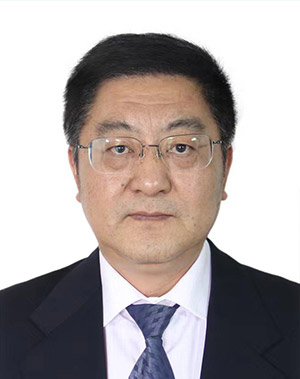

Eolian deposits and Asian climate reorganization
The origin and evolution of the Asian monsoon climate and inland deserts are among the key issues for understanding the mechanisms of earth system changes during the Cenozoic as they are the bases for exploring the tectonic-climate link, the roles of monsoon and dust in the global climate system, the environment backgrounds of life evolution, the monsoon-related carbon cycle, and the nature-human impacts on recent desertification. Guo and his collaborators were not only the first to discover the exceptional Miocene loess archive in the western Loess Plateau of China, but also convincingly demonstrated its eolian origin through substantial field investigations and laboratory analyses. They carried out high-resolution magnetostratigraphic, sedimentological, pedological and geochemical studies on nine of these sections from various geomorphic localities and developed multi-proxies of paleoclimate. These confirmed the spatially correlativity of the chronology/stratigraphy of these eolian sequences, and particularly the reliability of climate signals at continental-scale. They also firmly demonstrated that the more than 300 paleosols in the Miocene loess-soil sequences are dust-accretionary paleosols formed under the control of strong summer monsoon while the parent materials and the interbedded paler sediment layers are aeolian dust deposits brought by the Asian winter monsoon from the Asian inland deserts. The alternations between loess and soil layers attest to the earth’s orbital controls on the monsoon climate. These provided convincing evidence that the Asian monsoon-dominant climate and inland deserts were already established by 22 Ma ago due to the uplift of Tibetan Plateau and land-sea configuration changes. They then successfully reconstructed near complete Neogene monsoon and desertification histories showing that the desertification was substantially intensified by the northern high-latitude cooling since ~6 Myr.
Zhengtang Guo is a research professor at Institute of Geology and Geophysics, Chinese Academy of Sciences (IGG-CAS) and a professor at University of Chinese Academy of Sciences (UCAS). He graduated from Peking University in 1983 with a bachelor's degree and obtained his master’s degree in 1985 at University of Bordeaux, his Ph. D. degree in 1990 at University of Pierre & Marie Curie. He was promoted to research professor in 1996 and received the National Science Fund for Distinguished Young Scholars in 1997. Guo was elected academician of Chinese Academy of Sciences in 2013 and academician of The World Academy of Sciences (TWAS) in 2018. Guo’s research interests are centered on the Cenozoic geology and environment, ranging from paleoclimatology, paleopedology, biogeochemistry and human-environment interactions. He received the Second Prize of National Natural Science Award, Ho Leung Ho Lee Science and Technology Progress Award and National Award for Excellence in Innovation. Guo served as director of Institute of Earth Environment, Chinese Academy of Sciences, vice-president and provost of UCAS, member of PAGES Scientific Steering Committee, co-leader of PAGES’ Australasian Pole-Equator-Pole international project, vice-president of International Union for Quaternary Research (INQUA), president of China Association of Quaternary Research (CHIQUA) and co-editor-in-chief at Global and Planetary Change. He is currently director of Earth Science Department of National Natural Science Foundation of China (NSFC), director of the Academic Committee of IGG-CAS, vice president of Geological Society of China, deputy editor-in-chief at Science China: Earth Science and editor at Climate of the Past.